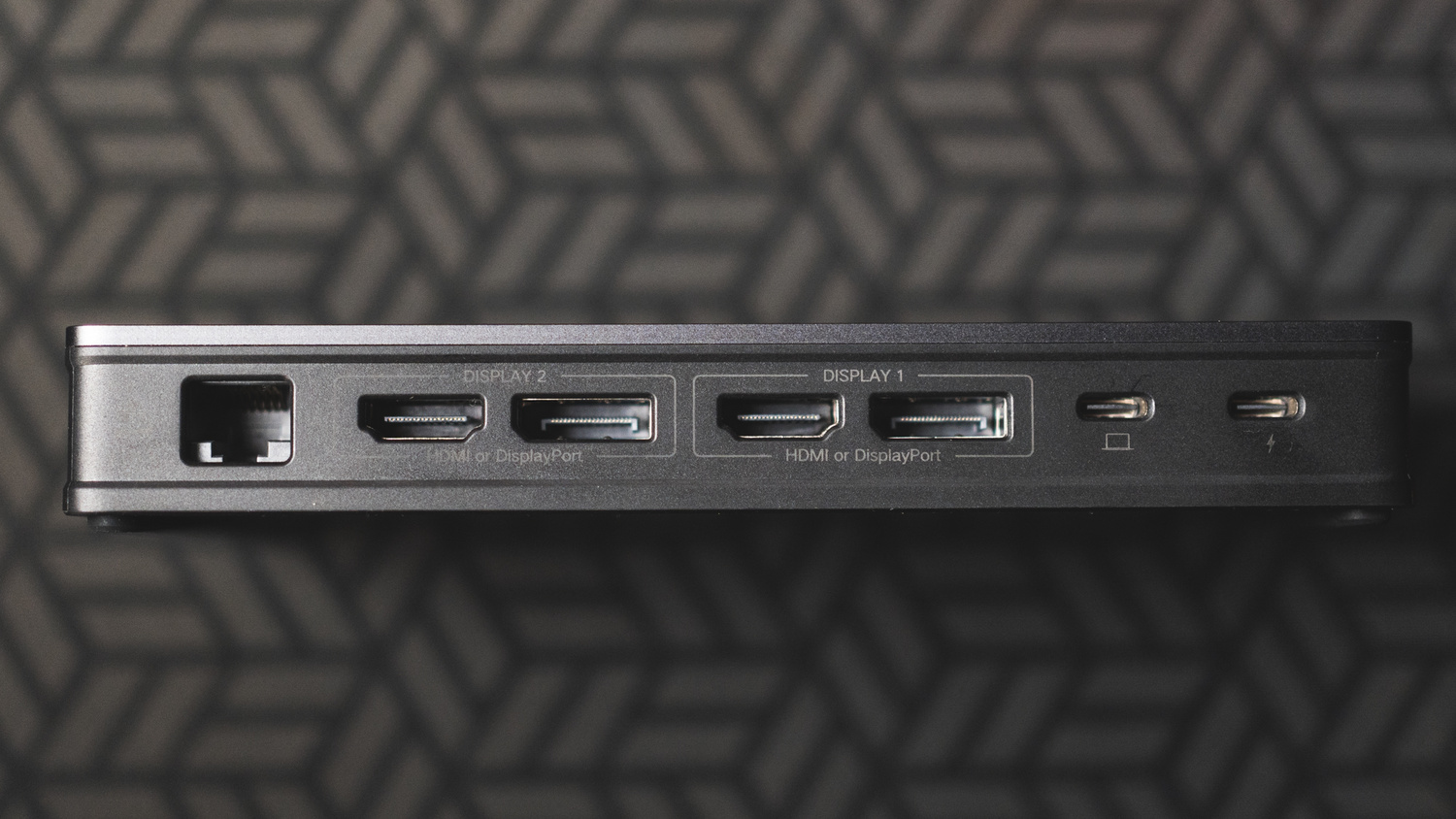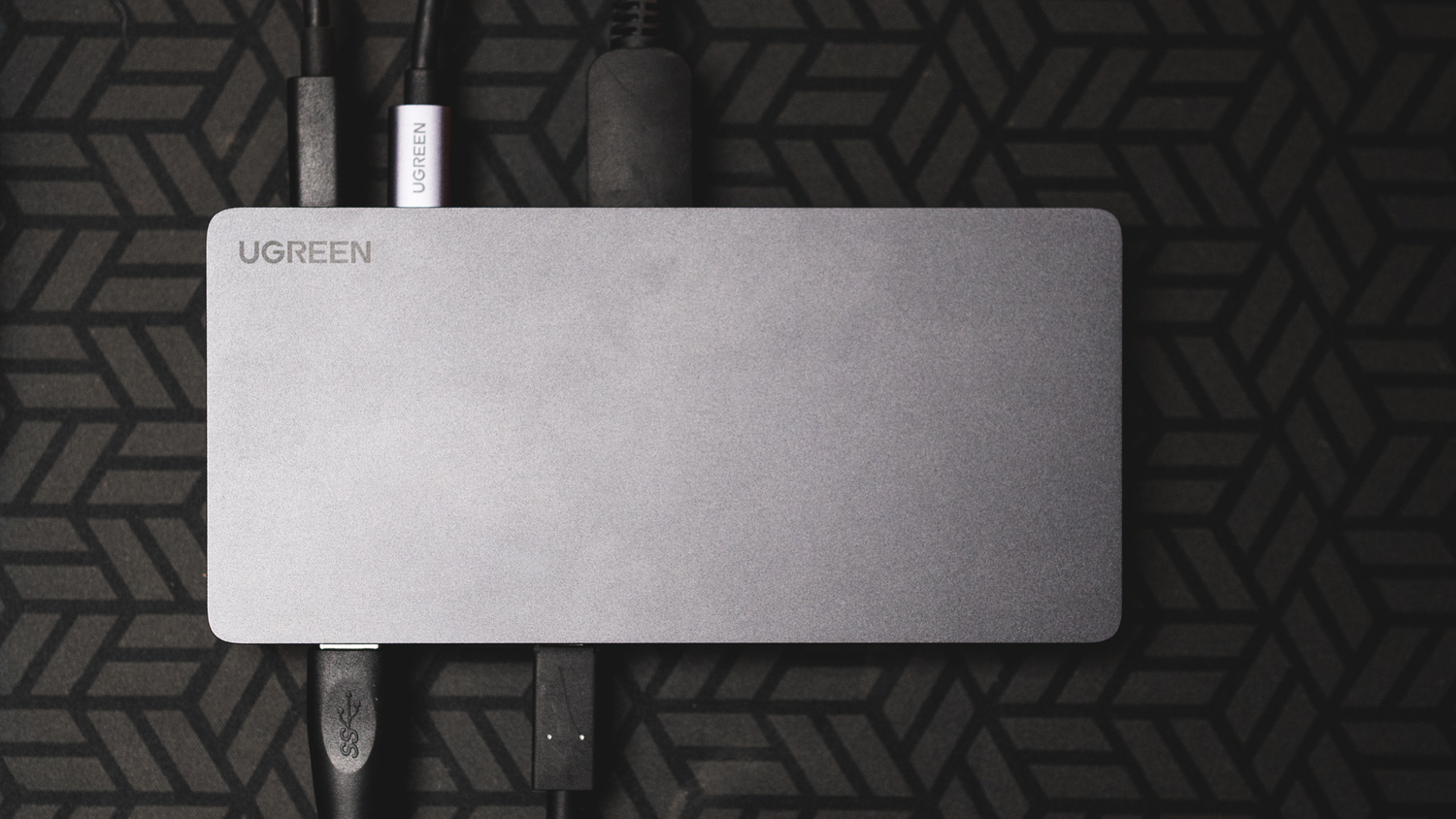There’s nothing like having a neat and efficient workstation, and for on-the-go digital creatives, this means having a laptop that you can bring everywhere is obviously a must. However, when in your personal workspace, having a docking station to bridge it with all your peripherals makes a huge difference in your workflow.
There’s a part in a laptop’s design process that one can assume gets pretty tricky. On one hand, you want the device to be thin and portable to make carrying it as easy as possible for the user. At the same time, the desire to put all the necessary ports to maximize compatibility probably complicates the equation. For a photographer or videographer who has to work on-location or while in transit, a powerful laptop is the only way to get the job done. However, there is also nothing like an organized desk with abundant options in displays and accessories to make a tedious editing job more efficient. That’s where a well-designed and well-equipped docking station or hub comes in.
The Ugreen 9-in-1 Docking Station

This new docking station from Ugreen comes in a 19.99 cm x 11.50 cm x 5.20 cm horizontally oriented slate with a gray matte aluminum cooling shell. The front edge houses two USB-A 3.1 and one USB-C 3.1 ports capable of up to 10 Gbps transfer speeds (dependent on device and cable) as well as a power button with indicator light on the right side. Both sides are allotted for ventilation, the top features nothing but a subtle Ugreen logo, and the bottom has rubber pads for friction on the surface where the hub is placed.

Left: rubber pads on the bottom
Right: size vents for cooling
On the rear panel is an RJ45 Gigabit Ethernet port, two sets of full-size HDMI 2.0 and DisplayPort 1.2 capable of 4K 60 Hz output to two simultaneous external monitors, a master USB-C input port to connect the laptop, and a USB-C power supply port capable of up to 100 watts with power delivery depending on the power supply used with it. These two ports allow the docking station to provide power to the laptop if capable of USB-C charging.

The package also includes a single USB-C to USB-C cable ideal to be used for connecting the laptop, and once plugged in, the device has an included driver installer to optimize the compatibility.
Application and User Experience
The Ugreen 9-in-1 Docking station on its own definitely comes in a desirable design that would match the preferences of users who would like to keep their desks tidy. However, the horizontal layout would mean generally taking more space than what it would if the hub could be kept vertical instead. Such an orientation would not be advisable though because of the fact that the vents are placed on the side panels that would be occluded if kept vertical.

Top view with cables plugged in
This versatile hub does offer a good variety of ports in terms of compatibility with monitors and other peripherals such as keyboards, editing consoles, and graphic tablets. It does, however, fall short on providing options for reading and writing to memory cards. The brand does offer some alternatives in terms of having a card reader through variants that do not have as many display options, in addition to the more feature-packed Ugreen 12-in-1 docking station that we reviewed as well last year. However, for this particular model, one would either have to use the laptop’s built-in card reader (if applicable) or use one of the ports to connect a dedicated card reader.

Using two external displays (the one on the right not calibrated to the room)
One of the obvious benefits of this docking station is the capability to extend displays to up to two simultaneous 4K 60 Hz displays and even make the laptop compatible with such configurations when it originally wasn’t through the device’s onboard features. This allows for the user to connect to both displays along with the other devices, plus potentially power the laptop, with the use of just one cable. The fact that the main USB-C port also delivers power coming from the 100 W power supply is a very handy feature that can allow the user to skip the power brick if the consumption rating is within that range. This generally means that most MacBooks can be powered directly by the output of the hub if the original power supply was instead connected to the docking station’s port. However, there are still laptops that would not be sufficiently charged by the 100 W output, such as the higher specced MacBook Pros and other more demanding creator laptops such as the ASUS ProArt Studiobook 16 that I personally use. Instead, the power input coming from the hub would at least delay consumption of the battery reserve or maintain it at the same level, depending on how heavy the current tasks are.

Simplifying plugging in
On top of the options for using multiple displays, this dock also makes using multiple external storage more convenient and less messy on the desk. The three 10 Gbps options (one USB-C 3.1 and two USB-A 3.1 ports in front) can efficiently connect external hard drives and solid state drives to go along with the display connections with just a single USB-C input on the laptop. Personally, since I use portable SSDs to keep my raw files and Lightroom catalogs and avoid bulking up my internal storage, this docking station offers efficient use not just for access to the files but also in backing them up to my larger hard drives.
In addition to the absence of a memory card reader, the 9-in-1 docking station also lacks a dedicated 3.5mm auxiliary port. While audio can be transmitted via the display options, there is no way to re-route to an external speaker from the hub itself. Lastly, one minor but notable aspect about the arrangement of the ports is that while it is good that the HDMI, DP, Ethernet, and power supply ports are all in the back where they can be hidden behind a desk without having to crossover, it would have been good if the main laptop connection was placed in front along with the other USB ports for the simple reason that the hub would probably be used behind the laptop and somewhere in front of or beside the monitor(s).
Conclusion
The Ugreen 9-in-1 docking station is a great option for anyone who uses multiple USB devices and multiple displays simultaneously. It offers a variety of configurations to simplify connecting display and storage devices onto a compatible laptop, and minimizes the number of ports being used as well as cables that are repetitively plugged and unplugged.
What I Liked
- Dual simultaneous extended 4K 60 Hz display options
- Fast transfer speeds on the USB 3.1 ports
- 100-watt power delivery
What Can Be Improved
- No memory card reader and audio output
- Horizontal configuration takes more space on the desk







I use a HP TB3 dock with my laptop and it has dual displayport output with 4k60 capabilities. I love the dock as it makes using my laptop at desk a breeze with, but what none of the reviews of it ever mentioned is that it cannot do 10bit output on either port, even when using single 1440p60 display. Luckily my laptop has mini-dp port, so I have to connect an extra cable just for the display and USB-C for all other peripherals (via dock).
It would be nice if you can update the review of this dock after testing if it can do 10bit color output in any of the combination of display (single or dual), which I think should be an important parameter to check for audience of photography website.
did you run a test speed to see if it keep up with the standards ?
the problem with the vertical beside to take less space, is you need to have a good stand because the change of a fall are great (high center of gravity)